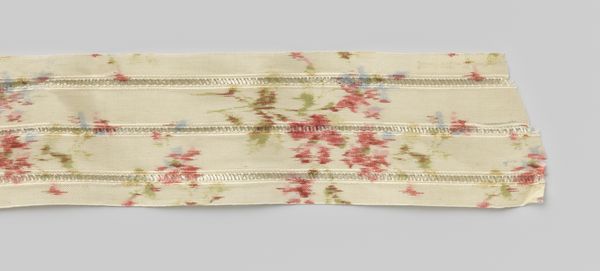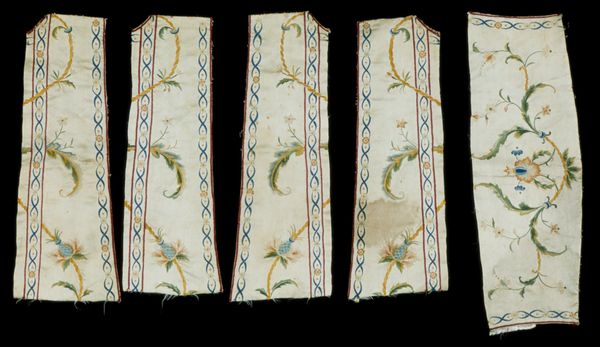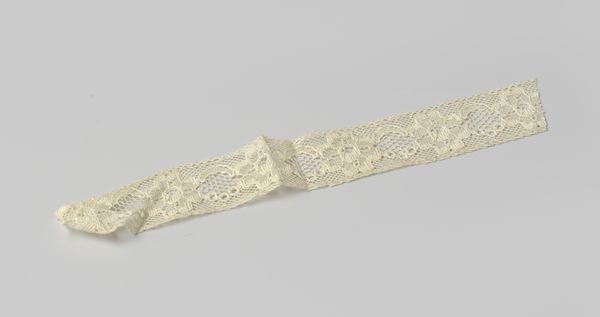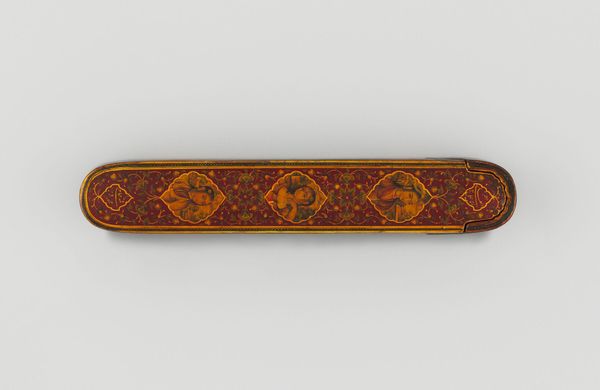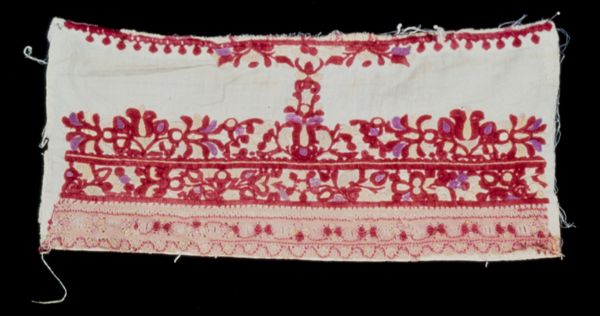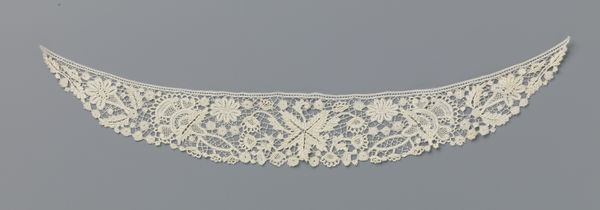
fibre-art, silk, textile, cotton
#
fibre-art
#
silk
#
textile
#
cotton
Dimensions: 38 x 1 7/16 in. (96.52 x 3.66 cm)
Copyright: Public Domain
Editor: This is an intriguing textile called "Border" from around the 18th century. It's attributed to an anonymous creator and housed at the Minneapolis Institute of Art. It looks like it's made from a blend of fibers, silk, and cotton, showcasing delicate floral patterns. I'm struck by the simplicity and repeating composition. How do you approach a piece like this from a formalist point of view? Curator: Focusing on the inherent structure, observe the strict, linear format; a bilateral symmetry of repeating floral motifs. The creamy field serves as ground, interrupted only by regulated blossoms. Note, too, the palette. What does that restrained spectrum suggest in its organization? Editor: It feels quite intentional – the pale base highlighting the floral patterns. The repetition makes me wonder about its function. Were these border patterns standardized? Curator: Function follows form. The repeating design suggests mass production, but the intricacy implies meticulous handicraft. Does the slight irregularity within the repetitive structure diminish or intensify your appreciation for this band? Editor: I think the slight variation adds a touch of humanity, and enhances the handmade feel, especially contrasted against the repetitive geometric borders. Is the visible craftsmanship here meant to be appreciated? Curator: The creator evidently balanced visual consistency with subtle details to reward close looking. The chromatic selection coupled with the structured placement creates an artful synthesis, yes? A simple thing becomes exquisite through thoughtful visual composition. Editor: I see what you mean. The formalism really highlights how the basic visual elements are crucial in defining the impact of the whole. Curator: Indeed.
Comments
No comments
Be the first to comment and join the conversation on the ultimate creative platform.


